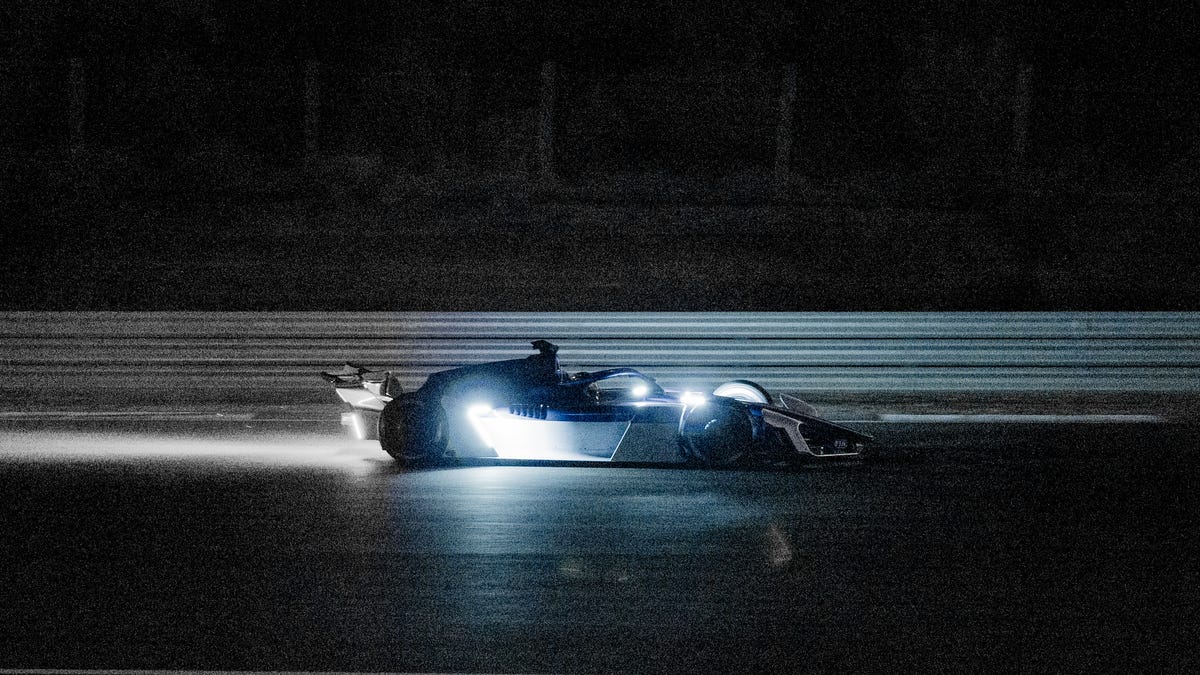Technologies
Oppo Says Its Find X6 Pro Phone Doesn’t Have a Main Camera
Instead, the company’s says all three of its rear cameras on the Find X6 Pro have main camera qualities.
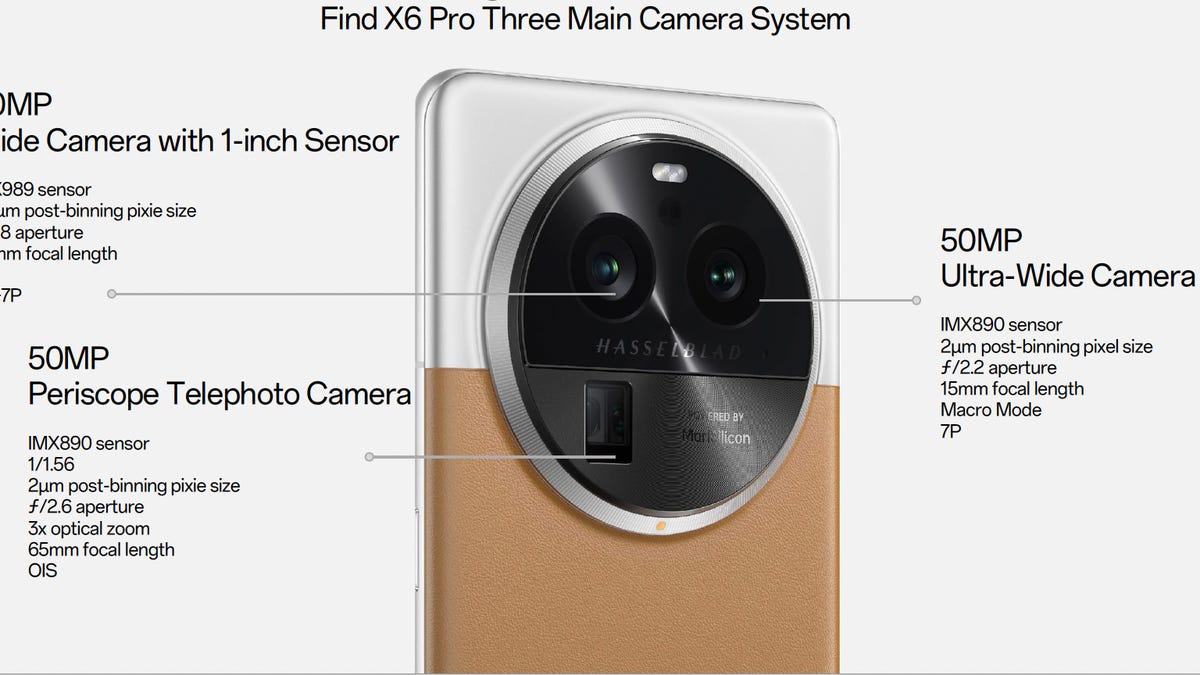
Oppo’s first flagship series of 2023 has arrived. The Chinese company unveiled the Find X6 series in China on Tuesday, which it says ushers in an «all-new three main cameras era» moving past a focus on a single main camera among smartphones.
The higher-end Find X6 Pro features a trio of 50-megapixel rear cameras, which Oppo co-developed with Hasselblad. It’s made up of a wide-angle camera complete with a large 1-inch sensor, a periscope-style telephoto camera that Oppo says has the largest sensor of any smartphone telephoto camera, and finally an ultrawide camera that can make detail-filled macro images. The Find X6 Pro uses a glass and aluminum lens cover, which Oppo says is drop and corrosion resistant to protect the three cameras housed inside. On the frontside, housed in a punch-hole notch is a 32-megapixel selfie camera.
Apart from the camera system, Oppo made sure to pack its Find X6 Pro with features that’ll make it a compelling Android flagship in 2023. The Find X6 Pro’s 6 has the brightest phone screen on perhaps any commercially sold phone (2,500 nits), a cutting-edge Snapdragon 8 Gen Plus 2 processor, a large battery, and fast charging in both wireless and wired capacities, which promise to revitalize the device’s dead battery in 30 minutes and 51 minutes respectively.
Oppo seems to have made efforts to create a durable flagship too. The front display uses Corning’s newest Gorilla Glass Victus 2, which apparently improved drop protection by up to 30% — whatever that means. It also has an IP68 rating for water- and dust-resistance, which means it’s protected from dust getting inside and can withstand being submerged in water. Samsung’s Galaxy S23 lineup has the same rating. So does the iPhone 14 lineup. Oppo says the battery will retain 80% of original capacity after four years despite fast charging.


You’re looking at the vegan leather finish of the Oppo Find X6 Pro. There are two other available colors.
Sareena Dayaram/CNETOppo says there are no current plans to release the Find X6 series internationally. Ahead of its China launch, Oppo sent me the Chinese version of the Find X6 Pro. In the limited time I had with the phone, I focused on testing the rear camera module, the headline feature of this device. No pricing details were made available at the time of this writing.
Find X6 Pro’s ultrawide camera
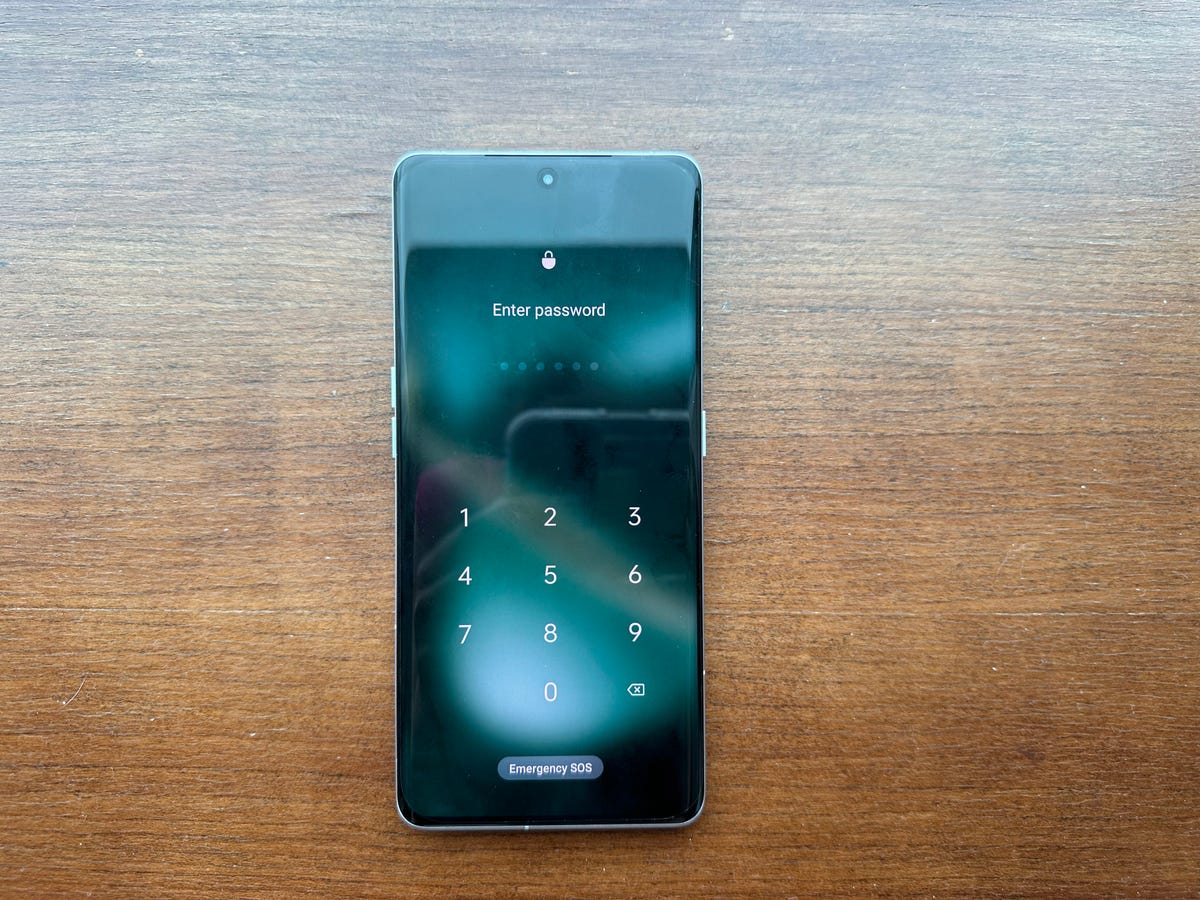

The Find X6 Pro has a 120Hz display.
Sareena Dayaram/CNETThe 50-megapixel ultra-wide camera is located on the upper right of the circular camera bump. It has a focal length equivalent of 15mm and a f/2.2 aperture. One of my favorite ways to use this camera was macro mode. I’ve long been a fan of Oppo’s Macro mode, and this time around was no exception. It’s easy to take close-up shots and the camera can swiftly auto-focus on your subject whether it’s light or dark. I was amazed that this phone could take lovely macro images in low light using the ultrawide camera, and it gave long-distance photos a beautiful natural depth of field. Scroll down past the text to see the cameras in action.
Find X6 Pro’s telephoto camera
The Find X6 Pro has a periscope style-telephoto lens, which has a large Sony IMX 980 sensor and an aperture of f/2.6, which Oppo says is the largest of any periscope-style telephoto camera. Telephoto cameras are crucial for taking clear pictures of faraway subjects — and the one of the Find X6 Pro is impressive. You can see some samples if you scroll down. The Find X6 Pro allows for 6x optical zoom and 120x digital zoom. For context, the iPhone 14 Pro Max has 3x optical zoom and 15x digital zoom, while Samsung’s Galaxy S23 Ultra has 10x optical zoom and 100x digital zoom.
Find X6 Pro’s wide camera
The wide camera uses Sony’s IMX 989 sensor, which is the same 1-inch sensor found on the Sony Xperia Pro-I, Xiaomi’s 12S Ultra, Vivo’s X90 Pro flagship phone. A 1-inch camera sensor isn’t actually 1 inch big, but it’s certainly on the larger size for a phone camera. What’s commendable is that Oppo was able to fit a 1-inch sensor into a phone body that’s roughly the same thickness as an iPhone 1 Pro Max, but more than 20 grams lighter.
A larger sensor means a wider dynamic range and improved low-light performance for both photos and videos. Oppo says the Find X6 Pro’s sensor is 156% larger than the Find X5 Pro, it can take in as much as 142% more light. I can’t independently verify that statement, but in my experience with this camera, it took wonderful photos in both dark and light conditions. Apart from the larger sensor, the ultrawide camera also has a f/1.8 aperture. Right below you’ll find some photos taken with the Find X6 Pro as well as a specs sheet.


Taken on default settings.
Sareena Dayaram/CNET

6x optical zoom example. Zoomed in from the image above.
Sareena Dayaram/CNET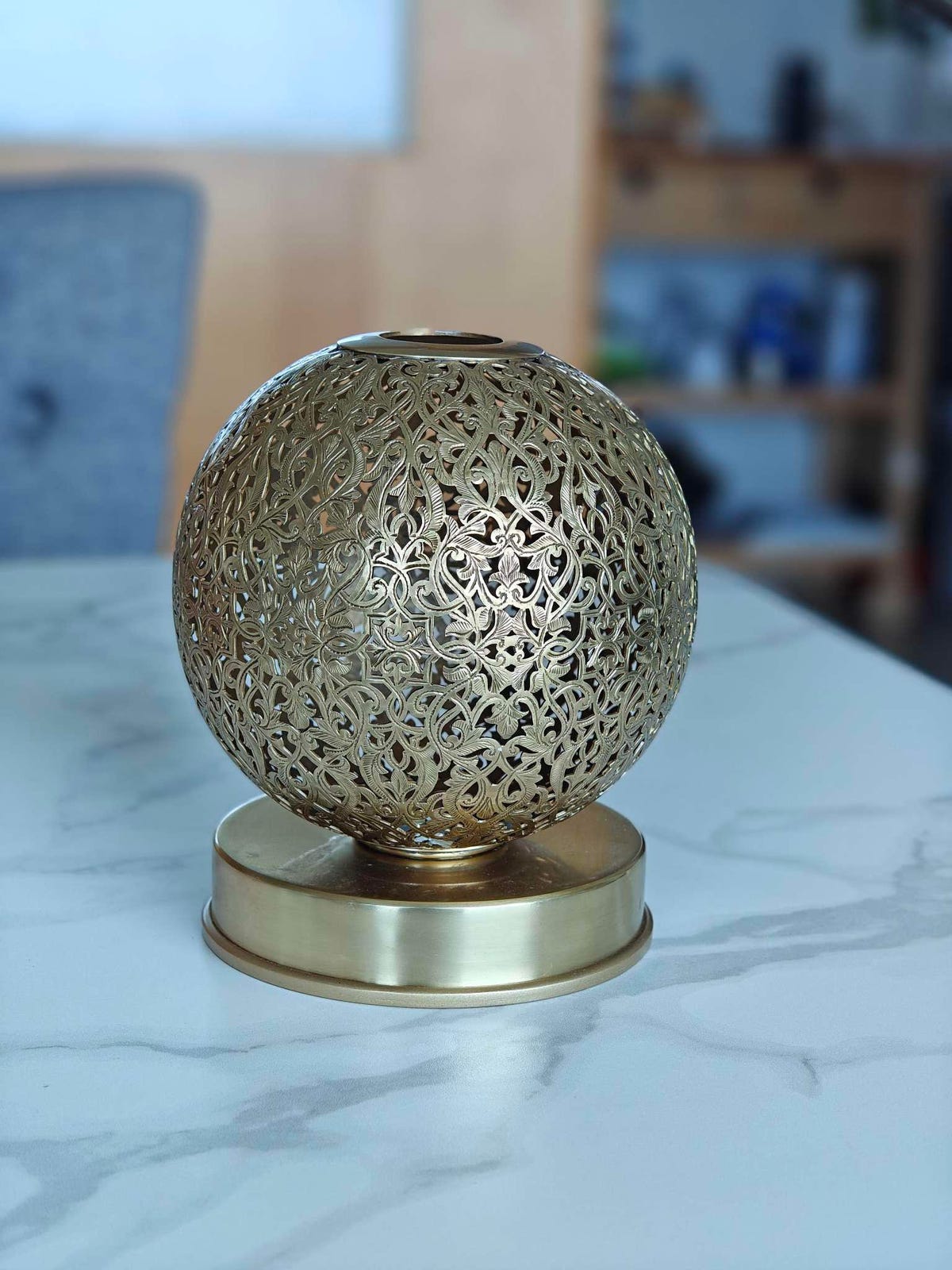

Portrait shot taken of this Moroccan lamp. Notice the depth of field and how the lamp is subtly made to be the focus of this image.
Sareena Dayaram/CNET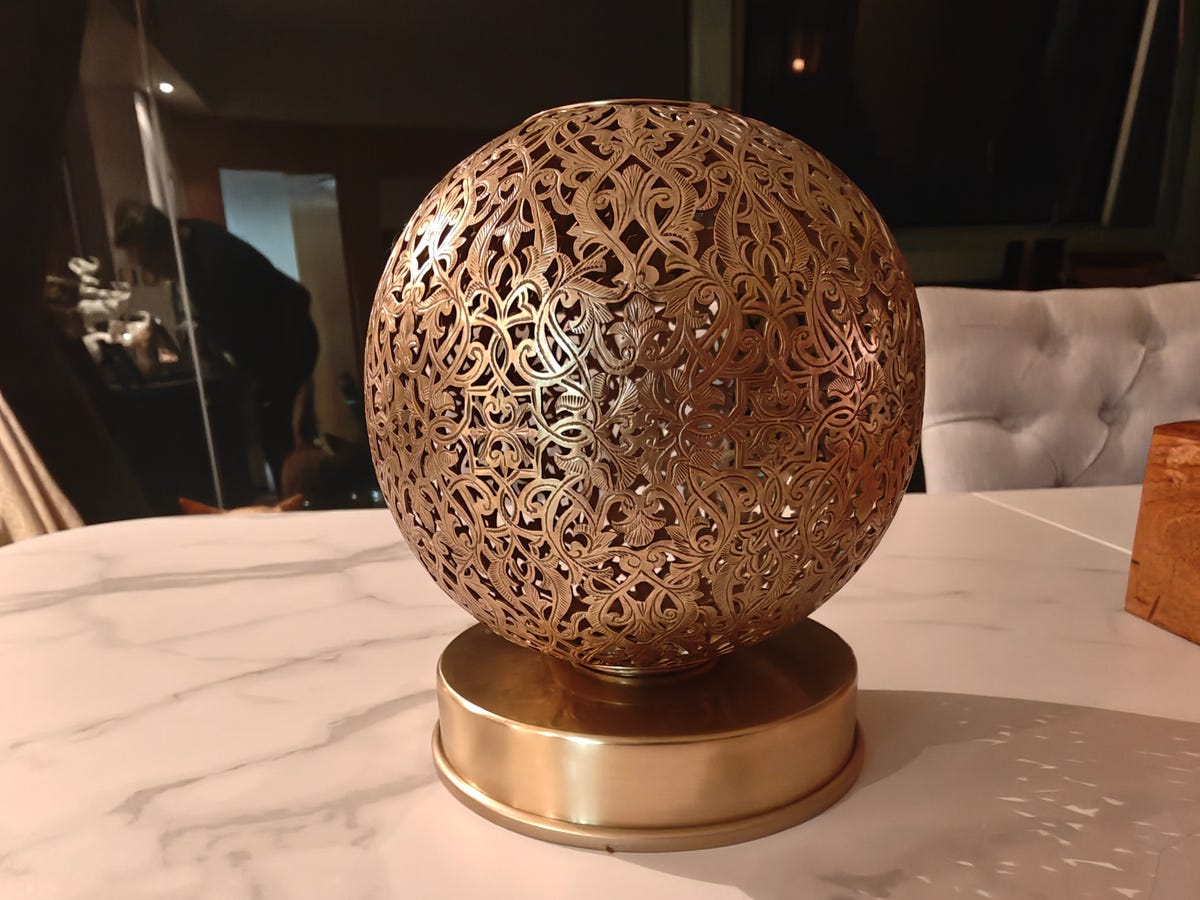

Even though this was taken in a dark room, the camera manages to capture the intricate detail of this Morrocan lamp. It’s also color accurate.
Sareena Dayaram/CNET

Example of macro mode. Notice the veins on the petals of the bougainvillea.
Sareena Dayaram/CNET

Macro photo taken in a dark room
Sareena Dayaram/CNET

Compare the colors of this image with the one below, which was taken with the iPhone 14 Pro Max. Which one do you like better?
Sareena Dayaram/CNET

This image was taken with my iPhone 14 Pro Max. I think it captures a clearer image than the Find X6 Pro and is more color accurate.
Sareena Dayaram/CNET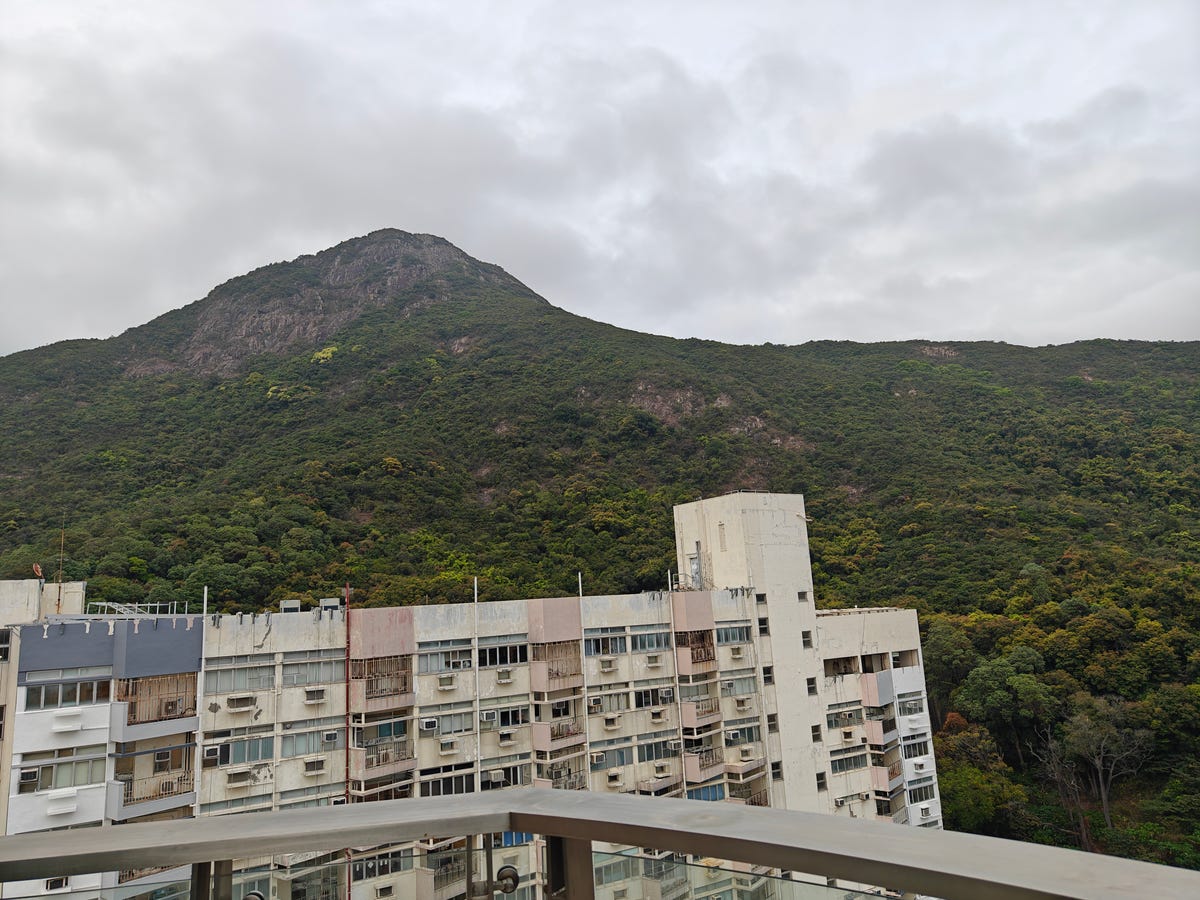

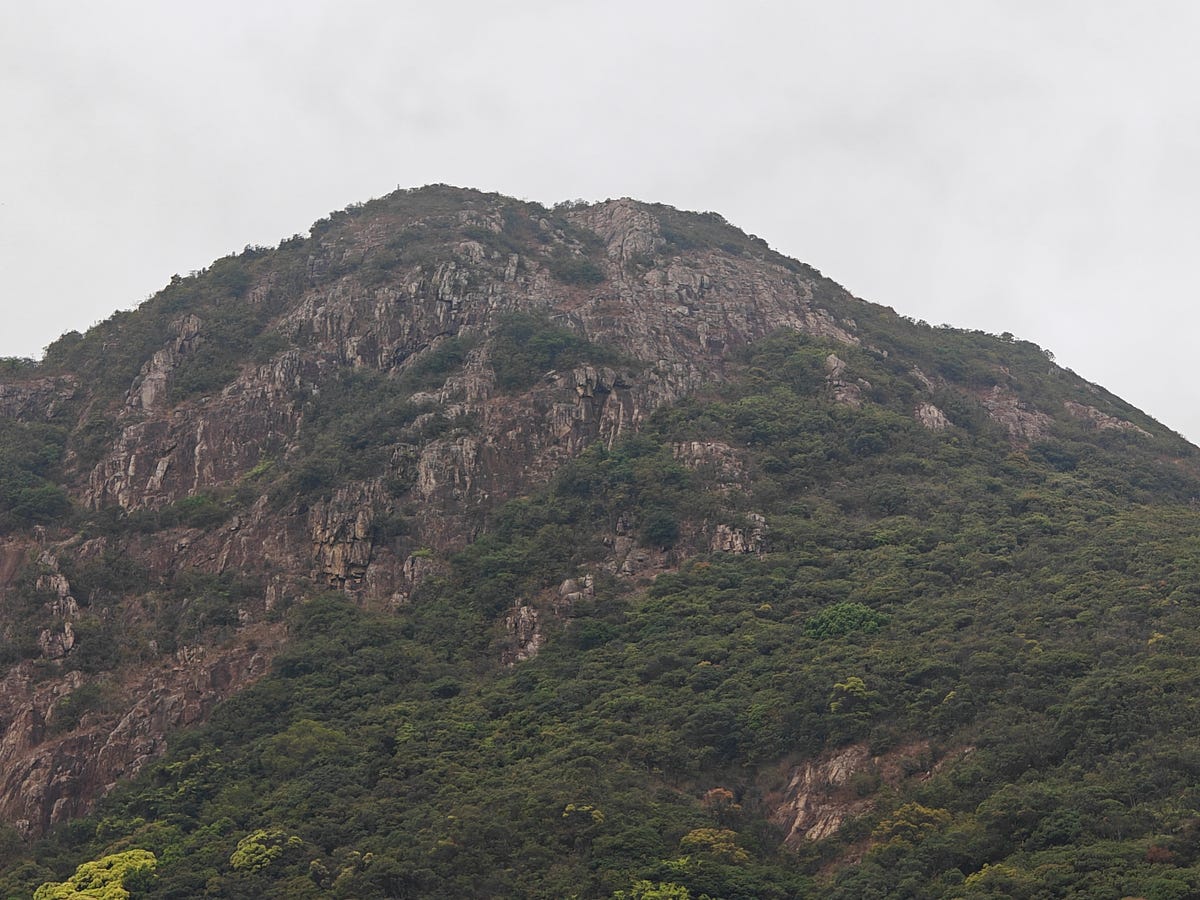

Example of 6x optical zoom. Notice how crisp the image remains despite how far zoomed in this image is compared to the image above.
Sareena Dayaram/CNETOppo Find X6 Pro specs
| Find X6 Pro | |
| Display size, resolution, refresh rate | 6.82-inch AMOLED (3,168×1,440 pixels) |
| Pixel density | 510ppi |
| Dimensions (Millimeters) | 164.8mm × 76.3mm × 9.5mm (vegan leather) |
| Weight (Ounces, Grams) | 216g 218g |
| Mobile software | Android 13 |
| Camera | 50-megapixel (wide), 50-megapixel (ultrawide), 50 megapixel (telephoto) |
| Front-facing camera | 32-megapixel |
| Video capture | 4K |
| Processor | Snapdragon 8 Gen Plus 2 |
| Storage/RAM | 12GB+256GB (only for black and green version) • 16GB+256GB • 16GB+512GB |
| Expandable storage | None |
| Battery/Charger | 5,000 mAh |
| Fingerprint sensor | Display |
| Connector | USB-C |
| Headphone jack | None |
| Special features | 6x optical zoom, 120x digital zoom, IP68 rating, fast charing |
| Price | TBC |
Technologies
Formula E’s New Electric Racing Car Is Faster Than a Formula 1 Car. What We Know So Far
The jaw-droppingly quick new Gen4 car will be raced in the 2026-27 season of Formula E, where there are hopes it will attract more fans to the motorsport.
Technologies
I Used the Oppo Find X9 Pro’s Bizarre-Looking Hasselblad Lens and Here’s Everything It Can Do
The Hasselblad teleconverter lens adds a 10x optical zoom to the Oppo Find X9 Pro’s 200-megapixel camera. It’s expensive but the results are fantastic.

The Oppo Find X9 Pro has a range of upgrades, including a new 200-megapixel telephoto camera with 3x optical zoom, which boasts several nifty zoom features to help you take a great photo no matter how far away you are from your subject.
For example, it delivers excellent shots at 6x by cropping into the sensor for 50-megapixel photos. Oppo says that it can deliver «lossless zoom» up to 13.2x using computational photography — that’s close to the max digital zoom on phones from a few years ago. And if that’s not enough for you, the Find X9 Pro also supports an external Hasselblad telephoto lens accessory, which further zooms into distant subjects.
Out of these three, the detachable telephoto lens is the most wild. When attached, the Hasselblad lens sticks out several inches from the back of the phone. It somewhat resembles a mini-telescope.
Oppo isn’t the first to make such an accessory; both Vivo and Xiaomi have done it before. However, Oppo’s take is different than the rest. While others offer a camera grip with a shutter button, Oppo’s Hasselblad Teleconverter Kit relies on the phone’s Quick Control hardware button or the on-screen shutter button to shoot the photos.
I’ve been using it a lot recently and here’s what it can do. I should note that the Oppo Find X9 Pro isn’t available in the US.
Using the Hasselblad Teleconverter Kit is kind of a hassle
The Hasselblad Teleconverter Kit comes with three pieces: a snap-on camera module attachment, the telephoto lens itself and a brace that can screw into a tripod for stability.
To use it, you also need to have the official Magnetic Photographer Case, which is purpose-built to support the slide-on attachment. You can then add the lens with a twist, which clicks securely into place over the 200-megapixel telephoto camera.
The external lens accessory is heavy, making the phone unbalanced and unwieldy. I got used to it, but it took a day to figure out how to hold the phone and lens combo most effectively. However, I sorely miss that there’s no camera grip to provide a secure hold for the phone when the lens is mounted. If I move my hand for a more comfortable hold or to tap the screen for long zoom shots, my framing is significantly altered. If I were to change one thing about this teleconverter kit, I’d add a camera grip to make this setup more comfortable to use.
You can use a tripod to brace the lens, which helps stabilize your shots in the viewfinder; however, this is counterproductive to the idea of using a phone to take photos in the first place. I don’t want to carry a tripod — at that point, I might as well just use a dedicated camera and telephoto lens. After all, the whole purpose of having a portable tele lens is to minimize bulk.
And yet, I love using it
The first time you add the Hasselblad lens and open the Camera app, you might be surprised to see the viewfinder upside down. To counter this, you need to go to the dedicated Hasselblad Teleconverter mode under the More menu.
Besides flipping the viewfinder the correct way, it gives you 10x, 20x and 40x zoom options. You can always use the slider to adjust the magnification between 10x and 200x. I used it for a day in Barcelona and loved the natural depth it added to human subjects. I was also surprised by some lowlight results.
Here are few of my favorite photos that I shot on the Oppo Find X9 Pro using the Hasselblad Teleconverter Kit:
I saw a person skateboarding after setting up my camera and kept tapping the shutter button in hopes of getting an action shot. I love how this came out because there’s no motion blur on the person or his skateboard. These kinds of shots require a fast shutter speed to freeze the moment, and the Oppo Find X9 Pro was able to do so at 10x zoom using an external lens. The colors are accurate, the contrast is nice and there’s a good bokeh despite having a moving subject.
When setting up this shot, I tapped on the yacht to move the focus point from the person sitting on the seaside. At 20x zoom, it captured a nice-looking shot but if you look closely, the details are missing from the faces of the people on the yacht. It’s because the camera moved slightly when I was adjusting the focus and trying to capture the photo. Overall, I still prefer the Hasselblad lens and Oppo combination for accurately capturing the colors of a sunset.
At 40x zoom, the Hasselblad teleconverter lens captures softer images and the details go for a toss. But its processing still retains the mood and feel of the frame which is just as important as getting sharp details. It gets the colors right and there’s a decent bokeh. It can also track faces to determine the subject, even at 50x zoom and, like in the above shot, you get decent clarity.
If you have a still subject, the external Hasselblad lens adds a DSLR-like shallow depth of field. It was even able to capture the woman’s hair strands in a windy environment. I love this photo because no portrait mode was used and that bokeh is the lens’ natural bokeh just like you’d get from a DSLR or mirrorless camera. It offers a similar shallow depth of field at 20x for still subjects.
For this photo, I tapped the wall for focus, which also adjusted the exposure and white balance automatically. Too many similar shots from other phones suffer from overprocessing, but not this one. I’m impressed by how it was able to expose for the light, without blowing out the highlights to white. The people were properly exposed without me needing to tap on either for focus and exposure. It also got the mood right in the process.
However, using the lens in low-light settings, like above, adds a lot of noise reduction and tends to give photos a soft, blurry watercolor look. The above shot was also captured at 10x and there’s light over the subject’s face, but the overall look is soft with fewer details. That said, it gives the photo a unique look, which I don’t dislike.
This is also a tap-lock-on-the-subject-and-shoot image, where I [the subject] was moving and the system was able to track my face to focus better. I love the photo’s contrasty look. In anything less than direct sunlight, the Hasselblad lens softens the subject, but the photos still come out looking great.
I like having the ability to expand my phone’s zooming capabilities for both photos and videos. However, the Hasselblad Lens Converter kit remains more of a novelty than something you’d use every day, mostly thanks to its price. While it’s fascinating how close you can get to distant subjects without losing much image quality, at 499 euros (roughly $575), it’s one of the most expensive phone accessories you can buy.
At that price, I’d expect it to function better with my phone. For instance, I’d like the camera software to be able to detect that I’ve attached an external lens, so it would open in the Hasselblad Teleconverter mode by default — rather than giving me a black viewfinder.
The Hasselblad Teleconverter kit is one of the most expensive phone accessories on the market. But if you can afford it, the lens adds a lovely natural bokeh to photos while retaining a scene’s natural colors. It also outputs excellent night shots. It might not be the best value but I can’t seem to put it down.
Technologies
NASA’s Escapade Mission May Finally Reveal How the Martian Atmosphere Works
NASA, Blue Origin and UC Berkeley combined efforts for NASA’s lowest-cost mission to Mars.
Sending anything to Mars is a much more difficult process than it seems. In the 1960s, the Soviet Union tried (and failed) in its first nine consecutive attempts, and the US was only able to succeed in quick flybys. The losing streak came to an end in 1971 with the success of the Mariner 9, the first spacecraft to orbit another planet.
More than 50 years later, Mars is still tough to get to, with only seven functional orbiters and two on-surface rovers still operating, most of which are run by NASA.
On Sunday, NASA’s Escapade, a collaborative effort among the space agency, UC Berkeley and Jeff Bezos’ Blue Origin, will launch and attempt to add two more orbiters to the elusive club of successful missions to Mars. Liftoff is scheduled for 2:45 p.m. ET.
The mission is simple on paper: Blue Origin’s New Glenn rocket will launch two Escapade orbiters into space on Nov. 9, depending on the weather and other factors.
Once there, the orbiters — nicknamed Blue and Gold after UC Berkeley’s school colors — will separate. This is where things get a little complicated. Blue and Gold will hang out at the L2 Earth-Sun Lagrange point, a part of space behind the Earth when viewed from the sun, where the orbiters can quite literally hang out without getting lost in space. They’ll stay there for a year before doing a quick flyby of Earth and departing for Mars. The twin orbiters are expected to arrive at the Red Planet by November 2027.
Don’t miss any of our unbiased tech content and lab-based reviews. Add CNET as a preferred Google source.
Space agencies launch missions all the time but few of them have the subtext of Escapade, which has not one but three underlying storylines to pay attention to.
New Glenn’s official debut
NASA has tapped Blue Origin’s large New Glenn rocket for the launch. New Glenn is the proverbial new kid on the block, and the Escapade mission will be the company’s first official mission into space. The rocket’s role will be to launch Escapade into orbit and then return to Earth.
Blue Origin sent New Glenn into orbit for the first time in January 2025. That mission, dubbed NG-1 by Blue Origin, showed that the rocket could launch and make it to space while demonstrating the company’s Blue Ring orbital transfer vehicle. Things didn’t exactly go as planned, however. Upon reentry, New Glenn’s first stage was unable to stick its landing, missing its target and plunging into the Atlantic Ocean, prompting an FAA investigation.
For the Escapade mission, all eyes will be on whether Blue Origin will do better this time in the landing phase. Not only is this the first NASA mission for the space company, owned by the CEO of online retail giant Amazon, but it will also make its second attempt to land New Glenn’s first-stage rockets without incident.
Should the company succeed, Blue Origin will join Elon Musk’s SpaceX as the only commercial vendors with reusable space launch vehicles. This could help reduce the cost and increase the frequency of space launches.
The 13 lives of Escapade
One of the challenges of the Escapade mission is its budget. Missions to Mars are usually expensive. The Mars Exploration Rover mission started in 2003 and launched a year later cost a hair over $1 billion, with $744 million of it going to vehicle design and launch. Even less expensive initiatives, like the failed 1999 Mars Polar Lander, still cost well north of $100 million.
Escapade didn’t have that budget. It’s part of NASA’s Small Innovative Missions for Planetary Exploration program. Its budget was less than $80 million, and to build the two orbiters, UC Berkeley and Rocket Lab were allocated $55 million of that total.
«Building two interplanetary spacecraft for $55 million was never going to be simple,» Dr. Robert Lillis, associate director for Planetary Science at UC Berkeley and the Escapade mission, tells CNET. «They say ‘space is hard’ and they’re right. For us and our spacecraft partners at Rocket Lab, it was tough to build robust, well-instrumented interplanetary probes on a low budget, so challenges were many.»
Researchers at Berkeley began work on Blue and Gold in 2016, and over the years, they dealt with myriad roadblocks, including budgetary concerns, the COVID-19 pandemic, supply issues from suppliers and even personal illnesses.
«I’ll put it this way, we have a slide deck called ‘The Nine Lives of Escapade’ and I think we’re up to 13 now,» Lillis says. «I could write a book on all the things that could’ve doomed the mission.»
The cost of admission
In 2013, the Indian Space Research Organization launched its Mars Orbital Mission, a successful attempt to put a satellite on the Red Planet. The total cost of the mission was $74 million, which undercut all other missions to Mars by a fairly significant margin when adjusting for inflation.
Escapade’s budget is roughly the same, with NASA paying Blue Origin $20 million for use of the New Glenn rocket in addition to the $55 million given to UC Berkeley and Rocket Lab for the creation of the two orbiters. Should the mission be a success, it’ll be NASA’s first low-cost mission to go as far as Mars, and the second such mission to succeed.
Reducing the cost of admission is an important milestone for NASA. It would open up more opportunities for future Mars missions, which could help pave the way for human exploration someday, although there are many other milestones that need to be hit before that can happen.
UC Berkeley and Rocket Lab successfully developed two orbiters that will spend their lifetimes scanning Mars’ magnetic field to gain a deeper understanding of its history, all while operating within a budget that may make future missions to Mars more frequent and affordable.
The Martian magnetosphere
Despite being one of Earth’s closest neighbors, there are still a lot of question marks surrounding Mars. It’s pretty well established that the planet had water at some point. Over the span of its history, the Martian magnetosphere started getting stripped away by solar winds, making it nearly impossible for water to continue to exist.
Science has a limited set of data that comes from single orbiters over the span of decades and Escapade hopes to fix that by having two orbiters that follow each other so that researchers can get more consistent measurements of the Martian magnetosphere. As Lillis says, the magnetosphere on Mars changes by the minute, so waiting for a single orbiter to circle back around leaves a lot of those changes unmeasured.
«With a single orbiter, we could measure conditions in the upstream solar wind, but then have to wait a couple of hours before the spacecraft orbit brought us into the upper atmosphere to measure the rates of atmospheric escape,» Lillis said. «That’s too long: We know the space weather propagates through the system in only one or two minutes.»
The ultimate purpose of the mission is to measure and observe how solar weather interacts with the Martian magnetosphere. Per Lillis, solar winds have been eroding the magnetosphere on Mars, similar to how water erodes rock in a river. Escapade will help science determine how fast and how much of the magnetosphere has eroded under the sun’s constant onslaught.
Because space weather can be so unpredictable and the existing data is spread out too far in terms of time, researchers aren’t quite sure what they’re going to find when they get there. Berkeley has simulation models that can predict things over the span of hours. Lillis says that the data from Escapade’s two-orbiter setup will help fill in a lot of those gaps.
«With Escapade, we can measure cause and effect at the same time, i.e., the solar wind and upper atmosphere simultaneously,» says Lillis. «To start to understand this highly dynamic system, we need that cause and effect perspective.»
You can watch the livestream of the Escapade mission launch on Sunday, at Blue Origin’s website.
-

 Technologies3 года ago
Technologies3 года agoTech Companies Need to Be Held Accountable for Security, Experts Say
-

 Technologies3 года ago
Technologies3 года agoBest Handheld Game Console in 2023
-

 Technologies3 года ago
Technologies3 года agoTighten Up Your VR Game With the Best Head Straps for Quest 2
-

 Technologies4 года ago
Technologies4 года agoVerum, Wickr and Threema: next generation secured messengers
-

 Technologies4 года ago
Technologies4 года agoBlack Friday 2021: The best deals on TVs, headphones, kitchenware, and more
-

 Technologies4 года ago
Technologies4 года agoGoogle to require vaccinations as Silicon Valley rethinks return-to-office policies
-

 Technologies4 года ago
Technologies4 года agoOlivia Harlan Dekker for Verum Messenger
-

 Technologies4 года ago
Technologies4 года agoiPhone 13 event: How to watch Apple’s big announcement tomorrow

